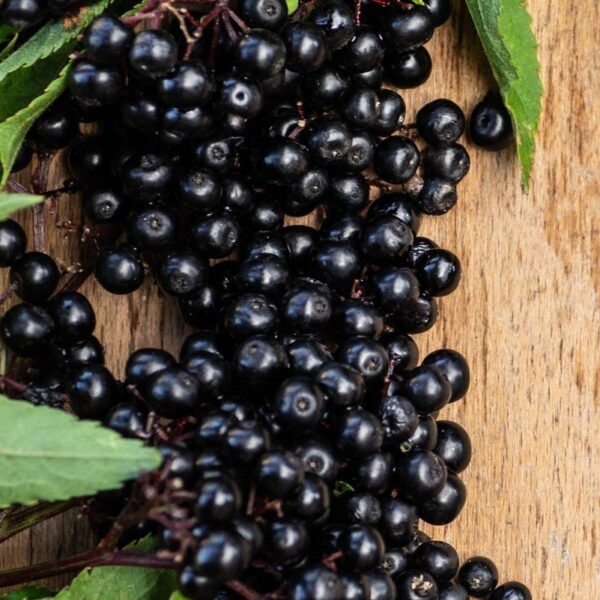Terpenes are major biosynthetic building blocks with diverse applications and benefits. For example, steroids are derivatives of triterpene squalene. The word terpene was coined in 1866 by a German chemist, August Kekulé, for all hydrocarbons having the empirical formula C10H16, of which camphene was one.
These aromatic compounds impart the characteristic scent of various plants like cannabis, pine, lavender, and fresh orange peel. Terpenes are also known for providing health benefits in humans, like cancer chemo-preventive effects, antimicrobial, antifungal, antiviral, anti-hyperglycemic, anti-inflammatory, anti-parasitic activities, and memory enhancers. Due to their health benefits and sensory properties, they are commonly used as aromatic/flavoring and nutraceutical ingredients. Terpenoids display a wide range of biological activities against cancer, malaria, inflammation, tuberculosis, and various infectious diseases, including viral and bacterial.
This article aims to provide a detailed understanding of terpenes, focusing on their production, applications in the food industry, and associated health effects.
What are Terpenes?
Terpenes are natural compounds with formula (C5H8)n for n ≥ 2. Plants, particularly conifers, predominantly produce more than 30000 terpene compounds. Terpenes incorporate most of the common, functional groups known, so this does not provide a useful means of classification. Instead, the number and structural organization of carbons is a definitive characteristic, and they are further classified by the number of carbons: monoterpenes (C10), sesquiterpenes (C15), and diterpenes (C20). Terpenes comprise isoprene (more accurately isopentane) units, an empirical feature known as the isoprene rule. Isoprene, a C5H8 gaseous hydrocarbon, is emitted by the leaves of various plants as a natural byproduct of plant metabolism. Monoterpenes are a category of terpenes that are light compounds and evaporate easily; therefore, they are known as top notes in the perfume industry.
Chemical structures for some important terpene compounds are given below:
Source: MDPI
How are Terpenes Produced?
Microbial fermentation is one way to produce terpenes. This method involves culturing a recombinant bacterium in the presence of a gaseous substrate whereby the bacterium produces a terpene or a precursor thereof, such as mevalonic acid, isopentenyl pyrophosphate, dimethylallyl pyrophosphate, isoprene, geranyl pyrophosphate, farnesyl pyrophosphate, and/or farnesene. The bacterium may comprise one or more exogenous enzymes, such as enzymes in mevalonate, DXS, or terpene biosynthesis pathways.
Microbial production of terpenoids from Escherichia coli and yeasts provides a promising alternative. E. coli and yeasts have proved to be the most attractive microbial platform, which can be conveniently developed to generate either bulk or value-added terpenoids due to versatile enabling technologies in genetic engineering.
Use of Terpenes in Food and Nutrition
Terpenes have a wide range of applications in the food and nutrition industry. Due to their aroma, different terpenes are used as flavoring/aromatic ingredients. Terpenes also provide various health benefits like anthelmintic, antiulcer, antiviral, antioxidant, anti-inflammatory, antinociceptive, and immunomodulatory effects. Terpenes are also highly effective as preservatives and antimicrobials in food preservation. Due to the high versatility of terpenes, they are used in various essential oils beneficial in nutraceuticals and flavoring applications.
Methods of Extraction
Most primary terpenes (linear terpenes and cyclized terpenes without decoration) are exclusively composed of hydrocarbons, so these molecules are very non-polar. The terpenes with 15 carbons or less are volatile due to lower polarity. Nonpolar terpenes can be extracted using a nonpolar organic solvent like Hexane. Using silica as a stationary phase in chromatography is another perfect tool to separate these terpenes from other compounds in the extract. Usually, terpenes with more carbon will elute more slowly than lower molecular-weight compounds. Still, cyclized terpenes can elute faster than the corresponding non-cyclic terpenes with the same carbon number because of their more compact size.
Most monoterpenes and sesquiterpenes can be volatile, requiring different analysis methods. The volatile Terpenes present in several plant tissues can be extracted by traditional hydrocrystallization, organic solvent extraction, or other novel methods such as solid-phase microextraction and microwave-assisted extraction.
Types of Terpenes
Terpenes belong to the largest group of secondary metabolites and consist of five carbon isoprene units, which are assembled (many isoprene units) in thousands of ways. Terpenes are simple hydrocarbons, while terpenoids are modified classes of terpenes with different functional groups and oxidized methyl groups moved or removed at various positions. Terpenoids are divided into monoterpenes, sesquiterpenes, diterpenes, sesterpenes, and triterpenes, depending on their carbon units. Most terpenoids with different structures are biologically active and are used worldwide to treat many diseases.
Monoterpenes
Monoterpenes comprise 10 Carbon atoms with two Isoprene units, with a molecular formula of C10H16. These are present in essential and fixed oils obtained from plants. These products have a unique aroma and are used in many pharmaceutical products. Different monoterpene-based oils are used as fragrances for making perfumes and other cosmetics. Most of the monoterpenes are active biologically with strong antibacterial activities.
Sesquiterpenes
Sesquiterpenes are the class of secondary metabolites consisting of three isoprene units (C15H24) and are found in linear, cyclic, bicyclic, and tricyclic forms. Sesquiterpenes are also found in the form of lactone rings. Many latex in latex-producing plants contain sesquiterpene, a potent antimicrobial and anti-insecticidal agent.
Diterpenes
Diterpenes are obtained from plants and fungi and are secondary metabolites formed from 4 Isoprene units. Most Diterpenes are known to be nonvolatile, but sometimes, they are found in very small amounts in essential oils. It has the molecular formula C20H32. This class of compounds showed significant biological activities, including anti-inflammatory, antimicrobial, anticancer, and antifungal activities.
Sesterpenes
Sesterpenes comprise 25 carbon atoms with 5 isoprene units and molecular formula C25H40. They are naturally found in fungi, marine organisms, insects, sponges, lichens, and protective waxes of insects. These compounds are biologically active and have anti-inflammatory, anticancer, antimicrobial, and antifungal properties.
Triterpenes
Triterpenes are a diverse group of natural compounds with a molecular formula C30H48. They are synthesized from an isoprene unit derived naturally from the acetate/mevalonate (MVA) pathway. Animals, plants, and fungi all produce triterpenes, including squalene, the precursor to all steroids. They have been described as anti-inflammatory, antiviral, antimicrobial, antitumoral agents, and immunomodulatory compounds. Several of them are implicated in the resolution of immune diseases.
Product Examples
Here are some common products that contain terpenes:
| Market Segment | Products |
| Beverages | Functional beverages, Powdered beverages, Tea, Coffee |
| Confectionaries | Nutrition bars, Sports bars, Nutritional snacks, Cereals |
Recommended Storage and Handling
Terpenes should be stored in airtight containers away from light and heat to prevent degradation. They should be handled carefully, avoiding direct contact with skin and eyes.
Safety and Regulatory Considerations
To understand if Terpene qualifies as a dietary ingredient, it is important to know what plant it is derived from. Often, the same terpene or terpenoid can be derived by multiple pathways. For example, (E)‐β‐caryophyllene, a sesquiterpene (i.e., a terpene with three isoprene units), can be found in plants such as Cannabis and lima beans, and also in the multicolored Asian lady beetle, Harmonia axyridis. However, even though the Terpene’s structure and all the compound’s stereochemical details can be the same in both plant and insect species, where the Terpene originated from can affect whether it meets the definition as a dietary ingredient.
The Terpenes obtained from multicolored Asian beetles may not be considered suitable for consumption as a dietary supplement unless it could be demonstrated that it was eaten as a food at one time or another by many people. Terpenes obtained from plant sources are botanical and will be considered a dietary ingredient. Tetrahydrocannabinol (THC) and cannabidiol (CBD) are ingredients in cannabis (Cannabis sativa). They are excluded from the definition of a dietary supplement under section 201(ff)(3)(B) of the Federal Food, Drug, and Cosmetic Act (FD&C Act). However, terpenes that are derived from parts of the cannabis plant that do not contain THC or CBD might be able to be marketed as dietary supplements since they will fall outside the scope of exclusion from the dietary supplement definition under section 201(ff)(3)(B) of the FD&C Act 11. The law only mandates the substance must have been part of the diet, not necessarily from what plant it is harvested.
Health Effects of Terpenes
Terpenes possess various nutraceutical and medicinal properties. One such is curucumin, which holds anti-inflammatory, antioxidant, anticancer, antiseptic, antiplasmodial, astringent, digestive, and diuretic, among many other properties.
Anti-Inflammatory Activity
Recent studies show that Terpenes possess anti-inflammatory properties by inhibiting various proinflammatory pathways in ear edema, bronchitis, chronic obstructive pulmonary disease, skin inflammation, and osteoarthritis. One naturally occurring monoterpene d-limonene was reported to reduce allergic lung inflammation in mice, probably via its antioxidant properties. It also reduced carrageenan-induced inflammation by reducing cell migration, cytokine production, and protein extravasation.
Effect of Terpenes on Tumors
Monoterpenes such as Thymol induce an anticancer effect in acute promyelocytic leukemia cells (HL-60) by arresting the cell cycle at the G0/G1 phase and mitochondrial depolarization. The cytotoxic effect of Thymol is through reactive oxygen species production followed by deterioration of the mitochondrial membrane—similarly, thymol-induced apoptosis in bladder cancer cells (T24, SW780, J82) through caspases activation. Conversely, thymol in a 7-day treatment study demonstrated an anti-apoptotic response via the Bcl-2/Bax pathway. Another study suggested the inhibitory effect of auraptene in azoxymethane (AOM) induced colorectal preneoplastic lesions in mice. Auraptene significantly inhibited the formation of aberrant crypt foci (cancer markers), β-catenin-accumulated crypt and cell proliferation, and increased apoptosis.
Neuroprotective Effects of Terpenes
Terpenes and Terpenoids can possess many promising neuroprotective actions against neurological and cognitive dysfunctions. Celastrol, ginsenosides, oleanolic acid, ursolic acid, asiatic acid, erythrodiol, and some triterpenoid saponins have been studied for years and have shown efficacy in protecting the brain against processes including neuroinflammation and oxidative stress. Limonene has been shown to exert anxiolytic effects, regulatory effects on neurotransmitters, and antinociceptive effects. Previously, it has been shown that limonene increased the metabolic conversion of dopamine and serotonin in the hippocampus prefrontal cortex, and striatum, respectively, suggesting anxiolytic and antidepressant-like effects.
Antiviral Action of Terpenes
One study concluded that Beta-pinene and limonene reduced viral infectivity by 100 %. Monoterpene exhibits high anti-HSV-1 activity by direct interaction with free virus particles. The tested drugs in this experiment interacted with HSV-1 dose-dependent, thereby inactivating viral infection. Monoterpenes in essential oils exhibit antiherpetic activity in the early phase of viral multiplication and might be used as potential antiviral agents.
Cardioprotective Activity of Terpenes
A natural alternative for cardioprotection is a dire need for the current society. Tanshinone IIA (TS) is a functioning moiety separated from the rhizome of Chinese home-grown medication Salvia miltiorrhiza Bunge. The most recent discoveries recommend that TS can forestall the emergence of atherosclerosis and the harm and hypertrophy of the heart.
According to research, Terpenes can positively affect heart conditions by acting on major risk factors like cholesterol and diabetes. Therefore, it is conceivable to speculate that terpenes present a beneficial effect, acting directly upon the cardiac muscle or indirectly through the vascular system.
Fun Facts About Terpenes
- There are over 20,000 different terpenes identified in nature, making them one of the largest and most diverse classes of organic compounds.
- While commonly associated with plants, terpenes are also found in some animals and insects. Certain terpenes play a role in communication and defense mechanisms in these organisms.
- Terpenes are responsible for the distinct scents of many plants, including lavender, pine, and citrus. They are widely used in aromatherapy due to their soothing and therapeutic properties.
- Essential oils are rich in terpenes. For instance, the relaxing scent of lavender oil is primarily due to the terpene linalool, and the refreshing aroma of pine oil is largely due to pinene.
- Hops, a key ingredient in beer, are rich in terpenes. Myrcene, one of the most abundant hop terpenes, contributes to many beers’ earthy, green, and citrusy notes.
- In cannabis, terpenes are believed to contribute to the “entourage effect,” where they work synergistically with cannabinoids like THC and CBD to enhance the plant’s overall effects.
- Some terpenes have natural insecticidal properties. For instance, citronella is a terpene widely used in mosquito repellents.
- Certain terpenes can change color in the presence of acids or bases, making them useful as natural pH indicators.
- Many terpenes have a long history of use in traditional medicine. For example, menthol (from peppermint) is used for cooling and soothing effects.
- Some studies suggest that terpenes released by forests, particularly pinene from pine trees, can help form clouds and influence the climate by reflecting sunlight away from the Earth.
- Terpenes are used in the art world as well. They are components in some natural varnishes and paints, providing a distinct aroma and desirable properties.
- According to astronauts, space has a distinct smell likened to “seared steak” or “hot metal.” This scent is thought to be due to polycyclic aromatic hydrocarbons related to terpenes.
Additional Resources
- Wikipedia – Terpene
- Medical News Today – What are Terpenes?
- IntechOpen – Terpenes Chapter
- LibreTexts Chemistry – Terpenes in Lipids
- ScienceDirect – Terpenes in Nursing and Health Professions
- MDPI – Terpenes Article
- Google Patents – US20150191747A1
- Frontiers – Terpenes in Microbiology
- PubMed Central – Terpenes in Food Industry
- PubMed Central – Non-Volatile Terpenes
- IntechOpen – Terpenes Chapter
- ScienceDirect – Triterpene
- Wikipedia – Triterpene
- PubMed – Terpenes Study
- PubMed Central – Terpenes and Their Properties
- PubMed Central – Terpenes Research
- PubMed – Terpenes in Plants
- PubMed Central – Terpenes in Aromatherapy
- PubMed Central – Terpenes and Neuroprotection
- PubMed – Terpenes in Plant Extracts
- ScienceDirect – Terpenes in Health
- PubMed – Terpenes and Health
- EurekaSelect – Terpenes Article
- Google Scholar – Triterpenoids
- PubMed Central – Antioxidants in Terpenes
- PubMed Central – Terpenes in Medicine
- PubMed Central – Terpenes and Pharmacology
- IntechOpen – Terpenes Chapter (Duplicate)
- ResearchGate – Terpenes in Cardiovascular System
- Burdock Group – Terpenes in Dietary Supplements







